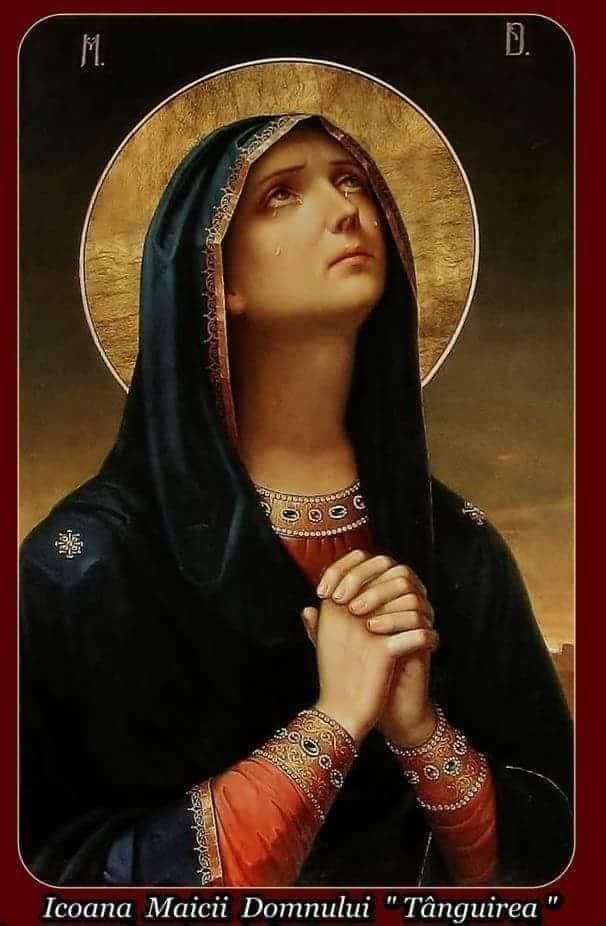

Irineu Protcenco
LAUNCHING OF THE MOTHER OF THE LORD
DO YOU KNOW THE STORY OF THE MOST BEAUTIFUL ICON AND OF THE ONE WHO PAINTED THE well-known and excellent "LAUNCHING OF THE MOTHER OF THE LORD" icon?
Many know the icon, but few know who the painter of this icon is.
His name is Irineu Protcenco, and he was an unsurpassed icon.
He married, had three children and was part of the Tsarist army during the First World War.
He had many attempts. His life was hard. He lost an eye in the war and, as such, painted all his life with only one regard.
His children died of typhus, and his wife left him. Being of noble origin, he had to flee from the communists.
He took refuge in Chisinau, in Moldova.
Without wealth and family, he supported himself by painting icons and realizing, according to the confession of Archim: Bartolomeu Florea, superb portraits of important people of the time.
He remarried a Ukrainian woman, Scobiciov Pelaghia, born on October 1, 1891, to parents Petru and Evdochia.
When the Russians invaded Bessarabia in 1940, he fled across the Prut to Romania.
Being a fugitive and without documents, he hid and painted icons. He was helped by a monk from the Darvari Monastery in Bucharest, Nicanor Bica, for whom he painted icons, living in the capital and then in the house of a Christian from Afumați.
One of the icons ended up in the hands of Father Ilie Cleopa from the Neamtlu Hermitage. Delighted beyond measure, the Reverend One, who saw what he saw, took his cane and his cane and made a long way to find him.
Also, with the help of the monk from Darvari, he found him in the middle of the night in a dilapidated house near Bucharest.
He made documents for him, told him his plans, and took him to Sihăstria with Pelaghia.
This would be a brief presentation by the iconographer Irineu Protcenco.
Let's further make known the appearance of the most famous icon of the Mother of God. "THE APPEARANCE OF THE MOTHER OF GOD".
Protcenco painted an icon with the weeping Mother of God.
Looking for a good painter, Archimandrite Cleopa found him in Afumați, near Bucharest, the vagabond Ioan Protcenco.
Here is what Father Cleopa testifies:
"I brought Protcenco from Bucharest. It was at Afumati. He fled from Bessarabia from the Russians. Poor thing! He was there with his second wife. He was a great painter in Bessarabia. His wife was from Russia. And he was also from beyond the Dniester.
I brought them here. They both died, poor people!
He painted the chapel and the icons. I managed to get approval for them to come here. I intervened at the Ministry. I had a perfect friend there, Teofil Pandele, who was the director.
I got him a permit, and then he painted; poor thing! Here, I gave them cells—great painter - Ioan Protcenco.
His second wife, Pelagia, became a nun, and she was poor! He also died here. Protcenco painted an icon with the weeping Mother of God. She would go to that icon, a prominent icon in the church, and cry and cry for him...".
(Arch. Cleopa Ilie, a confession made in the television film "The Happy Misfortune of a Wanderer", made by the writer Grigore Ilisei).
Shortly after he arrived in Sihăstria, he was asked to paint a "test" icon.
He prayed a lot to the Mother of God and painted a foreign icon as if with the brush of a mortal:
"Lamentation of the Mother of God."
Father Paisie and others recalled that the Mother of God appeared to him and thanked him for how he painted her.
Sick of the lungs, having only one eye, with his soul torn by the storms falling on him, the painter Protcenco found the saints as his friends.
He lived only for them, read their lives several times, prayed, and only then went to work.
He was very calm and quiet. He wasn't talking to anyone.
As the monks called it, he had his "painter's bench" in the monastery cemetery. Everyone respected his desire to spend time quietly. It is said that he would get up and leave whenever anyone approached him.
Paisie Olaru, the well-known and beloved clergyman, wrote a page about him and mentioned him in prayers until the last day of his life.
Ioan Irineu Protcenco spoke very little. Just a few words a day. He lived in a world of his own, where only God and His Saints, whom he painted, had made room for, especially in the last years of his life.
Ioan Protcenco was born on May 8, 1888, in Nova-Pavlenko-Kharkiv in Ukraine, in a noble family, receiving the name Ivan, in Romanian Ioan, at Baptism. As a small child, he was attracted to painting; he had an excellent talent for portraits.
He also wanted to paint icons but needed help managing their faces. The meeting with a spiritually enhanced nun would unravel his unfulfillment:
"If you want to paint beautiful icons, confess more often, fast, pray more, and you will paint icons whose beauty is not of this world."
This urge followed him throughout his life. This way, we will understand why he only eats 3-4 pm of the day. Paint with prayer and with post black. During this time, he did not speak to anyone and did not accept to speak, even under the scaffolding, in the church.
Father Paisie remembers climbing the scaffolding next to him to watch him paint. Protcenco told him:
"If you came, I can't paint anymore!" And he was ready to go down.
Another time, the father did not dare to "disrupt" his work.
While he was working, his wife, Pelagia, was praying.
Archimandrite Ioanichie Bălan, an apprentice - in those years - at Sihăstria, remembers:
"I used to buy his paints and prepare his oil. I was handing him the materials.
I was 20 years old and helping him while he was on the scaffolding. Interestingly, his wife, Pelagia, was praying while he was working. He read a psalter a day, and he sat on the scaffold. Do not eat anything in the morning until about three in the afternoon:
Father, if I eat, I can no longer paint that day. So, I have to fast to be able to work... He only painted while fasting. She was praying in the cell, and he was on the scaffold. If someone entered the church, he could no longer paint. He stopped, even if he didn't know who it was. I understood later that he had the prayer of his heart. The secret prayer, which works inside, in the heart, mystically, so to speak, and in this atmosphere of prayer and solitude, but, at the same time, of union with Christ, he paints".
In August 1953, his illness worsened a severe lung and heart disease.
Being 65 years old, he asked to be a monk. His monasticism and haircut "in the great scheme" was done right next to the icon where the Purest had appeared to him and inspired him in the divine splendour of the colours that painted his face Protected by angels and by the prayers of the Gift-filled One, he crossed the threshold this world on the third day after monasticism, still wearing the angelic protection of the mantle.
It was August 23, 1953. The monastery monks sang his eulogy and placed him in the "Poiana Linisti" until the day of resurrection.
"This story moved me to tears, and inside me, someone was telling me:
"You can't help but make this story public; it's too beautiful "...Be it Irineu Protcenco, be it Ilie Cleopa, Paisie Olaru, the voice of any of them, it doesn't matter, I made it known to everyone, this useful word."
God help everyone!
